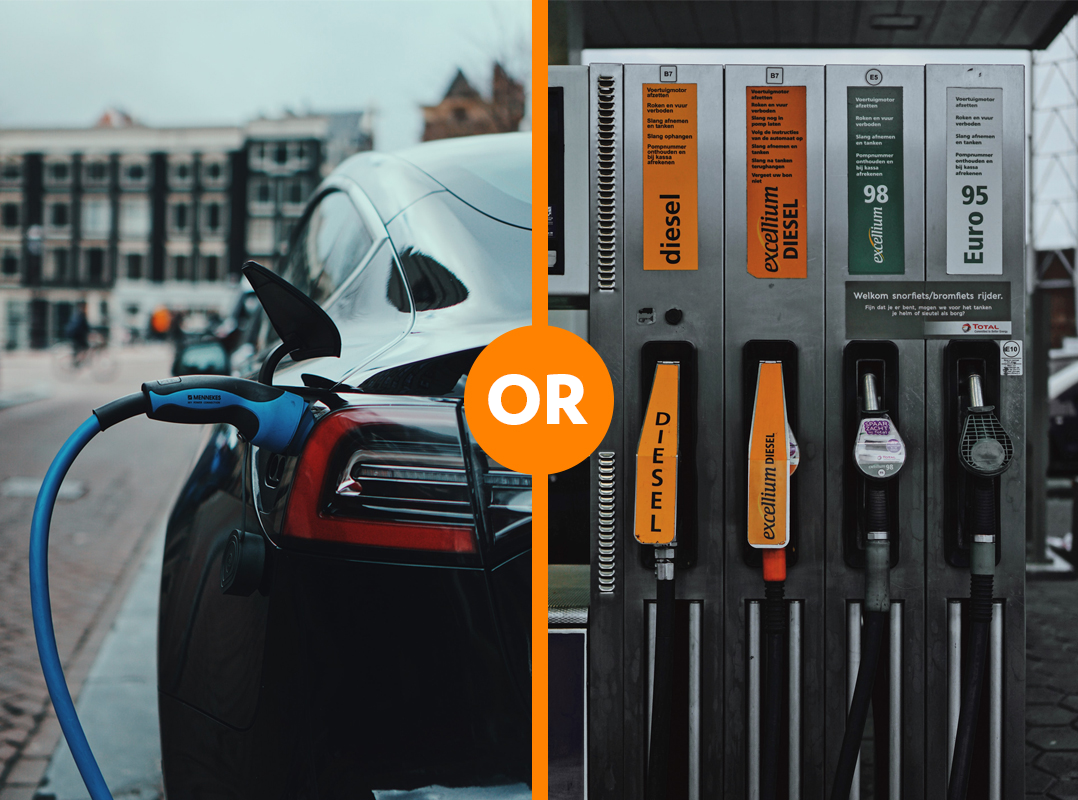Petrol, hybrid or electric? Or still diesel?
Will your next car be an electric car? Or will you opt for a hybrid? Which car is right for me? And which fuel?

To make the right choice, it is important to know our driving profile first and foremost. The first and most important question in determining your driving profile is: 'How many kilometres do I drive per year?' Next, we determine what we will use the car for. Is this the first car and will it be used for long distances on the highway or is this a second car and will it be used mainly around in the city centre? Or should it be suitable for professional purposes? Finally, we should also set a budget for the purchase of the car, but also for fuel consumption, maintenance as well as tax obligations.
First of all, it is important to know the pros and cons of the different powertrains.
Petrol
A car with a petrol engine is ideal for someone who drives less than 20,000 km a year. The main advantage of a petrol car is that it is cheaper to buy and it has lower maintenance costs. The engine reaches its operating temperature faster, making this car ideal for shorter distances. Of course, there are also some disadvantages, namely higher fuel consumption, shorter service life and higher CO2 emissions. So in short, these cars are ideal for shorter distances close to home. At the moment, this is the segment with the widest range.
Diesel
The diesel car is ideal for long distances or for someone who drives more than 20,000 km a year. The advantages of these cars with an explosive engine are lower fuel consumption (15 to 20 per cent less than a petrol car), powerful engine and less CO2 emissions. These advantages are accompanied by some disadvantages like the more expensive purchase price & rising diesel price. In addition, diesel cars were politically sidelined making them less interesting from a tax point of view.
FACT: The higher the price of fuel, the lower the purchase price of the car.
Hybride
With the evolution of the hybrid powertrain, today we can distinguish three differences hybrid powertrains: the mild hybrid, the full hybrid & the most famous plug-in hybrid. All three contain an electric motor combined with an internal combustion engine.
Mild hybrid
In a mild hybrid, the electric motor recovers energy when braking or decelerating. This recuperated energy can then be used when accelerating to reduce the work of the combustion engine. So the electric motor cannot work on its own but works hand in hand with the combustion engine resulting in lower consumption. This car is therefore perfect for those who want to reduce consumption but still enjoy some 'extra power' from time to time.
Full hybrid
A full hybrid, like a mild hybrid, recovers energy when decelerating and thus recharges the battery. The larger battery capacity of these cars means that they can be fully electric, but only for short distances and up to a certain speed. An ideal car for those who combine longer distances with short trips through the city centre.
Plug-in hybrid
The best-known of the hybrid powertrains is the plug-in hybrid. Like all hybrids, it combines an electric motor and an internal combustion engine, supplemented by a connection for charging the car to the grid. The car can therefore be charged both from the grid and by energy recuperation while driving, resulting in a longer electric driving range. This consequently makes it possible, for example, to commute to work entirely electrically, depending on the distance and radius.
Elektrisch
The market share of electric cars is growing daily and this is visible on the road. Good news is also that manufacturers continue to evolve resulting in larger battery sizes so that the driving range of these cars continues to increase. With certain models you can theoretically drive up to 730 km, in reality this is several dozen kilometers less depending on the weather, the type of roads and your driving style. Still, these radiuses are gradually approaching the driving range of a car with a hybrid or combustion engine. The charging time of electric cars is also shrinking by using a fast charging station, for example.
But what is the right car for me?
Everything depends on your driving style, usage, mileage per year, the possibility of suitable accommodation and, of course, your budget. First of all, determine your driving profile and then choose a car with a drive that suits you.
Need help determining your driving profile or have questions about a particular power train or car? Do not hesitate to contact us or visit one of our showrooms near you. We will be happy to help you find a car that meets your requirements.
